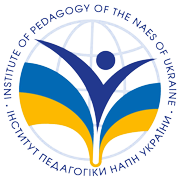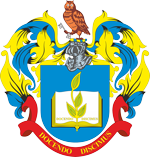Structural and Functional Model of Future Borderguard Officers’ Training on the Basis of Distance Learning Technologies
Abstract
Structural and functional model of future borderguard officers’ professional training on the basis of distance learning technologies has been substantiated in the article, which takes into account the main components of the researched process. This model is the imaginary schematic system that reproduces, imitates, and reflects characteristics and features of the process. The model revealed the following blocks: targeted, content, procedural and diagnostic. The model helps to give pedagogical research results provided in summary form, systematically to display the properties and characteristics of the educational phenomenon as border guards’ training using distance learning technologies. Targeted block generates objective, professional requirements, basic principles and tasks, components of future borderguard officers’ professional training based on distance learning technologies. Didactic goal, professional training objectives, organizational principles define content block of the model of cadets’ professional training. The content of education is a system of knowledge, skills, ways of activity, behaviors which cadets master in the learning activities. Content block of model of future borderguard officers’ professional training reflects interconnections and inter-influence of fundamental methodological scientific approaches, namely: acmeological, competent, axiological, cultural, system.
Procedural block of model reflects the essence of the learning process, contains cycles and stages of training, methods of teaching and learning, educational software, subjects, tools, forms and technologies of the educational process. Diagnostic block takes an important role in the model of future borderguard officers’ professional training; it includes a set of criteria and indicators to assess the level of cadets’ training with implementation of the choice of optimal controls results of training activities. The main evaluation types of educational achievement is qualifying (input), current and final control. To implement these controls instructors use different forms: interview, exercises, tests, etc. Efficiency of the model is achieved through model completeness, consistency, interdependence of model blocks. All blocks of the model are considered in logical interconnection and focused on the final result, which is mostly high and middle level of professional training of future borderguard officers’ professional training based on distance learning technologies, sufficient for the effective accomplishment of their professional duties.Downloads
References
Savchuk L. O. Informatsiini tekhnolohii u fakhovii pidhotovtsi maibutnikh ekonomistiv do samostiinoi navchalno-piznavalnoi diialnosti (Informational technologies in professional training of future economists for independent educational and cognitive activity), Khmelnytskyi, 2008, 172 p. [in Ukrainian].
Moroz N. V. Formuvannia sotsiokulturnoi kompetentsii yak skladovoi profesiinoi pidhotovky kursantiv vyshchykh viiskovykh navchalnykh zakladiv (Formation of social and cultural competence as a component of cadets’ professional training at high military educational establishments), Khmelnytskyi, 2007, 234 p. [in Ukrainian].
Ziaziun I. A., Sahach H. M. Krasa pedahohichnoi dii (Textbook for teachers, postgraduates, students of secondary and high educational establishments), Kyiv, 1997, 302 p. [in Ukrainian].
Semenova A. V. Paradyhmalne modeliuvannia u profesiinii pidhotovtsi maibutnikh uchyteliv (Paradigmatic modeling in professional training of future teachers), Odesa, 2009, 504 p. [in Ukrainian].
Honcharenko S. U. Pedahohichni doslidzhennia : metodolohichni porady molodym naukovtsiam (Pedagogical researchers : methodological recommendations for young scientists), Kyiv-Vinnytsia, 2008, 278 p. [in Ukrainian].
Fitsula M. M. Pedahohika (Pedagogics), Kyiv, 2003, 528 p. [in Ukrainian].
Krushelnytska O. V. Metodolohiia ta orhanizatsiia naukovykh doslidzhen (Methodology and organization of scientific researches), Kyiv, 2006, 206 p. [in Ukrainian].

















